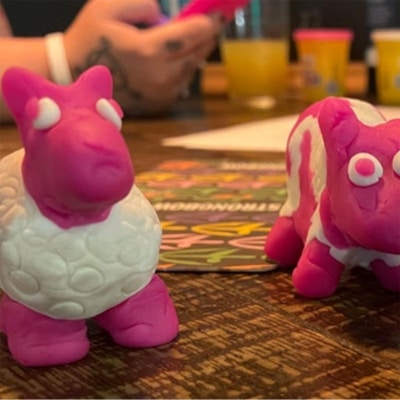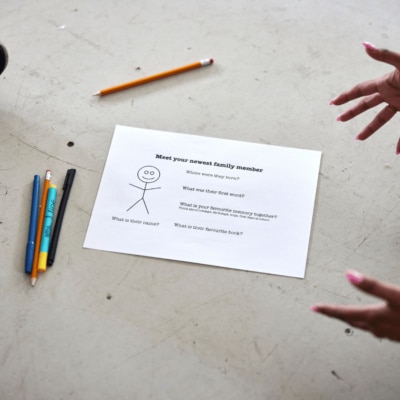Reflections from a Remote Rehearsal
Posted on March 24th, 2020

‘Adapt’ very much seems to be the word across a challenging week for us, and of course for all. It was creativity that steadied Coney. Half-way through rehearsals for Three Futures (and a Fortune) our team were thrown the creative challenge: what does a remote rehearsal look like?
Whilst we may not have the definitive answer, we thought we’d share with you some top tips from our very own ‘Remote Rehearsal Room’ for a devised project.
Very soon, we’ll be sharing more of what we’ve been preparing for Coney through the crisis: how we can make and share more play for remote audiences, be a resource and support for artists and organisations with our tools and knowhow, and generally help with fun and connection through play. Join our Network, Mailing list and keep an eye on our social media for more very soon!
•
A note on Three Futures (and a Fortune): Coney have been developing an interactive project that activates The RSA’s Future Work research, allowing people to playfully engage with their ‘Four Futures of Work’ report. The project was meant to be launched at Nesta’s FutureFest last Friday which has been postponed.

The Basics
- We opted for the following platforms
- Google Hangouts for group work
- Google Docs to collate or work on live documents together
- Take more than the usual ITC-recommended breaks – screen time is tough on the eyes and moving away from your laptop every now and again boosts creativity. Three hours on a screen is very different to three hours in a room.
- A structure of:
- Morning Check In
- Group Discussion
- Set individual or smaller group tasks (pairs)
- Task work
- Share tasks together as a group
- Group Discussion
- Set up individual check ins for individual needs that may not be able to be shared with the wider group
- Flexibility is key
- Record your sessions (for posterity and to allow for focus in the session)
- Experiment with the medium and find how it works for you and your team (as with any group, people have different needs and sensibilities, some people will respond well to more solo work, while others will want to connect with different people intermittently). But fundamentally the nature of ‘prepare and share’ works really well in this medium.
Online
- Unlike a physical rehearsal room, there isn’t the opportunity to have smaller /sidebar discussions among people. You can and should create opportunities for smaller group work but it’s important to consider another way to facilitate in-the-moment discoveries and discussion (chat box worked well in Google hangouts, but it became a commentary on what was happening, rather than an invitation to try something different). One thought to consider in trying this again is scheduling two pause points – mid-way through the day and end of day to ask if anything new/interesting has come up for people that they’d like to explore.
- With everyone’s front on faces on the screen everything is very public, so you have less opportunity for asides – use the chat box as a solution for this, so you’re not drawing focus from whoever is speaking at that time, but that thought is still captured.
- A key difference in working online is that the in-person feedback loop is missing. In devising, it’s important to be able to support the development of ideas which are very often created in the moment. In working in this medium, that nuance is missing (although google are chipping away at the challenge (Experimental) Turn on autozoom camera control – G Suite meeting room hardware Help). Setting a playful atmosphere is really helpful for that – encouraging people to listen for the right moment to make a comment, rather than waiting until the (default) end or prompt of the director. That builds confidence over time.
Space
- We’ve loved seeing how our team have used their living spaces to enrich their characters. There’s been real opportunity in working in, and experiencing other people’s, different environments, from in character Qigong sessions to big pitch presentations.
- Working from home comes with management of that space, and a responsiveness to it. Try to set up the management beforehand, but also bring this into your check ins in the morning that allows people to break away if they need to.
- We found a real creative opportunity in the comfort of our own homes.
- Laptops can often feel like fairly uncreative spaces for many of us – remember to vary the medium of tasks i.e. use paper, movement, etc. Or, if you have to locate that task to the laptop, bring creative utensils with you to help stimulate.
Three Futures (and a Fortune) is created by Coney and commissioned by The RSA and Nesta.
Here represented by Abu Ansari, Harriet Bolwell, Gemma Brockis, William Drew, David Finnigan, Melanie Frances, Jeannine Inglis Hall, Rachel Hosker, Tim Lewis, Kieran Lucas, Michelle McMahon, Ed Naujokas, Adam Robertson, Matthew Spencer and Tassos Stevens
Back to all posts




